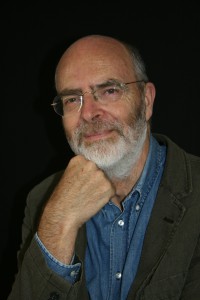
Produced on the occasion of the joint meeting of the Scientific and Medical Network and the
Society for Scientific Exploration on Mapping Time, Mind and Space (Brú na Bóinne, Ireland, 2012).
Introduction
Use of electrical metaphors for comprehension of transformative cognitive processes
From “periodic table” to “periodic container”
Periodic table of elements as problematic sociopolitical metaphor
Engaging with distinctions
Using the periodic table as a patterning template for cognitive transformations
Possible mapping of periodic correspondences into nested circles
Towards a “new set of wheels” for psychosocial navigation
Necessary “tuning” of any periodic representation
Recognition of cultural icons within a pattern of nested circles?
Conclusion
References
Introduction
In a preceding exercise the focus was on identifying the nature and range of cognitive transformations, of which people are commonly aware, in quest of an approach to configuring them together in a meaningful pattern (In Quest of a Dynamic Pattern of Transformations: sensing the strange attractor of an emerging Rosetta Stone, 2012). That initiative indicated various possibilities for further exploration. The challenge is that these possibilities are disparate in nature and it is quite unclear how they might be fruitfully interrelated, whether this is feasible, or whether any outcome would be comprehensible — or even desirable. An initial purpose is therefore merely to identify the pieces of a puzzle — of unknown design — which could include in no particular order:
- the experience of cognitive transformations — as argued extensively in the above-mentioned paper
- the cybernetics of human knowing, as providing one disciplined approach to cognition in terms of a well-recognized, mathematically-informed language (cf. (cf. Cybernetics and Human Knowing: a Journal of Second Order Cybernetics, Autopoiesis and Cyber-Semiotics; European Society for the Study of Cognitive Systems).
- various efforts to recognize cybernetics of a “higher order”, notably with a specific focus on self-reflexivity and recursiveness, as separately reviewed (Consciously Self-reflexive Global Initiatives: Renaissance zones, complex adaptive systems, and third order organizations, 2007)
- the variety of electronic components essential to the design of functional circuits — understood as widely-recognized tangible forms embodying cybernetic control functions on which a computer-enabled, knowledge-based society is dependent. Given the precedent of biomimicry, the recognition through “technomimicry” that such components might effectively constitute accessible metaphors of cognitive transformation processes (resisting, inducing, “encapacitating”, etc….)
- the periodic table of elements as illustrative of a widely accepted pattern of relatively complex organization — adaptable to the issues of cognition, as separately argued (Periodic Pattern of Human Knowing: implication of the Periodic Table as metaphor of elementary order, 2009; Periodic Pattern of Human Life: the Periodic Table as a metaphor of lifelong learning, 2009; Functional Classification in an Integrative Matrix of Human Preoccupations, 1982)
- probable requirement for senses other than vision through which pattern recognition may be found to be meaningful, as notably suggested by sensitivity to harmony in music (cf. Tuning a Periodic Table of Religions, Epistemologies and Spirituality — including the sciences and other belief systems, 2007; Cyclopean Vision vs Poly-sensual Engagement, 2006; Strategic Challenge of Polysensorial Knowledge: bringing the “elephant” into “focus”, 2008)
- the possibility of radical design innovations, notably inspired by geometry and topology (and their implications for astrophysics), as potentially vital to enabling forms of paradoxical comprehension appropriate to the challenge of turbulent times
- the fundamental role of key symbols in implying a widely-held “unconscious” insight into integrative order, as exemplified by the Tao symbol of the East or variants of the cross in the West (such as the Lauburu) — and the value of exploring the possibility of such contrasting symbols (Middle East Peace Potential through Dynamics in Spherical Geometry: engendering connectivity from incommensurable 5-fold and 6-fold conceptual frameworks, 2012; Enhancing the Quality of Knowing through Integration of East-West metaphors, 2000)
- the understanding of the variety of personality types, as variously articulated (Myers-Briggs Type Indicator, the mindscapes of Magoroh Maruyama, etc), possibly essential to enabling effective teams and viable communities (cf. Maurice Yolles and Gerhard Fink, Personality, Pathology and Sagiv-Schwartz Mindscapes, Social Science Research Network, 2012)
- the degree of articulation, as a pattern language, offered by the classical Chinese encodings of change-related insights into decision-making (Transformation Metaphors: derived experimentally from the Chinese Book of Changes (I Ching) — for sustainable dialogue, vision, conferencing, policy, network, community and lifestyle, 1997)
- constrained human cognitive capacity and the quest for ultimate simplicity — irrespective of unconstrained, conventional explanatory capacity, unencumbered by the complexity of a multiplicity of dimensions (cf. Dynamics of Symmetry Group Theorizing: comprehension of psycho-social implication, 2008). Potentially related constraints are suggested by Dunbar's Number, the Hayflick Limit, and apoptosis.
- the unrealistically questionable nature of conventional aspirations to definitive cognitive closure, as separately argued (Paradoxes of Engaging with the Ultimate in any Guise: living life penultimately, 2012; Living as an Imaginal Bridge between Worlds Global: implications of “betwixt and between” and liminality, 2011).
The following exploration is an effort to weave together these different “threads” using the periodic table as a valuable template — whilst offering a specific critique of the role of the table metaphor in current psychosocial organization. The weaving metaphor itself follows from a previous argument (Interweaving Thematic Threads and Learning Pathways, 2010).



